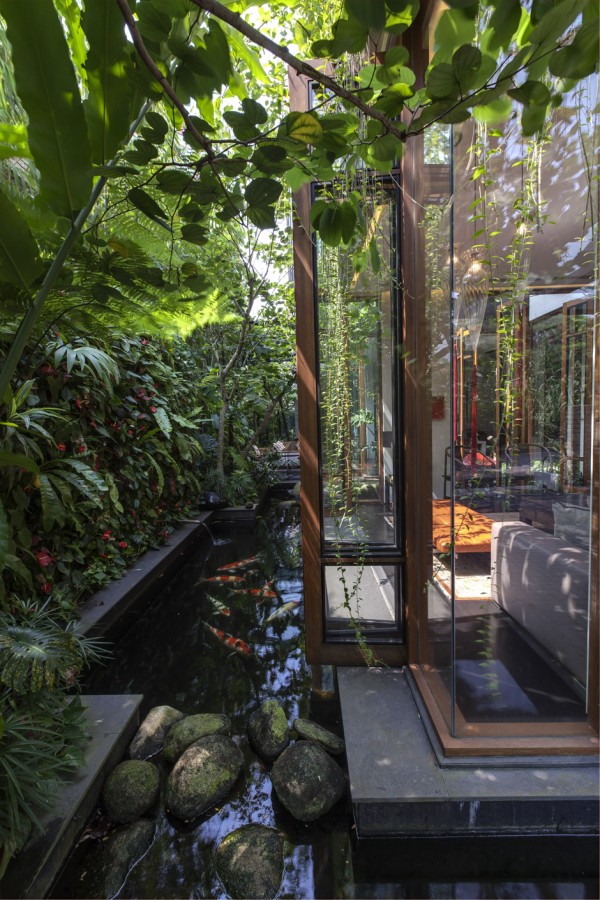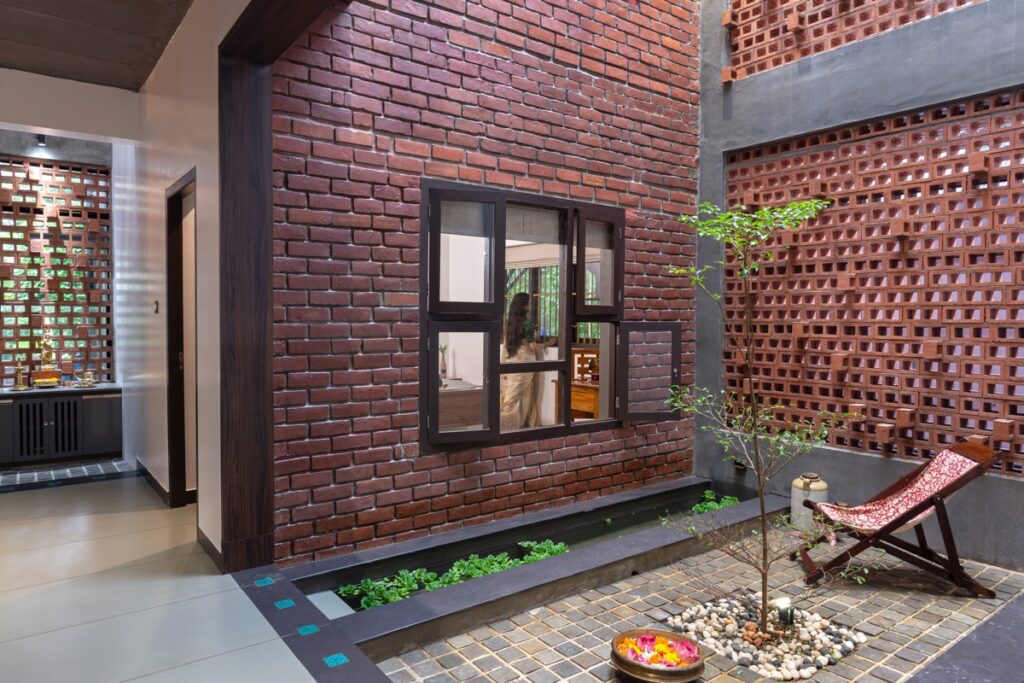Biophilic design is a new way to think about healthy buildings and architecture. Buildings that are designed with biophilic principles in mind can have a significant impact on the health of the people who live in them
What is Biophilic Design?
- Biophilic design is a type of design that incorporates elements of nature into the built environment in order to promote a sense of well-being and connection to the natural world. This can be achieved through the use of natural materials, the incorporation of plants and greenery, and the incorporation of natural light and views.
- The goal of biophilic design concept is to create a built environment that is more harmonious with nature and that supports the health and well-being of the people who use it. Research has shown that exposure to nature and natural elements can positively impact mental health, stress levels, and overall well-being.
Types of Biophilic Design
There are many different types of biophilic design, and the specific approach will depend on the needs and goals of the project. Some common types of biophilic design include:
- Direct connection to nature: This type of biophilic architecture involves creating a direct connection to nature by incorporating elements such as plants, water features, and natural materials into the built environment.
- Nature views: This type of biophilic design involves providing views of nature from within the built environment, such as through windows or skylights.
- Natural light: This type of biophilic design involves maximizing the amount of natural light that enters a space, which can help create a sense of openness and connection to the natural world.
- Natural ventilation: This type of biophilic design involves incorporating natural ventilation into a building, which can help improve air quality and create a more comfortable and pleasant atmosphere.
- Green roofs and walls: This type of biophilic design involves incorporating plants and greenery onto the roofs or walls of a building, which can help purify the air, reduce heat island effects, and create a more pleasant and calming atmosphere
Why Biophilic Design?
There are many reasons why biophilic design is important. Some of the key benefits of biophilic design include:
- Improved health and well-being: Research has shown that exposure to nature and natural elements can positively impact mental health, stress levels, and overall well-being. By incorporating elements of nature into the built environment, it is possible to create spaces that support the health and well-being of the people who use them.
- Enhanced productivity and creativity: Studies have also shown that people who have access to nature and natural elements in their work or living environments tend to be more productive and creative. By creating spaces that incorporate nature, it is possible to enhance productivity and creativity.
- Greater sense of connection to the natural world: Biophilic design can help create a sense of connection to the natural world, which can be particularly important in urban environments where people may not have easy access to nature.
- Increased sustainability: Biophilic design can also contribute to sustainability by incorporating natural materials and elements that are renewable and require fewer resources to produce.
How does Biophilic Design help the Environment?
Biophilic design can help the environment in several ways:
- Reducing energy consumption: By incorporating natural light and views into buildings, biophilic design can help reduce the need for artificial lighting and heating, which can save energy and reduce greenhouse gas emissions.
- Using natural materials: Biophilic design often incorporates natural materials, such as wood, stone, and clay, which are derived from natural sources and require fewer resources to produce than synthetic materials. This can help reduce the environmental impact of building construction and reduce the demand for non-renewable resources.
- Incorporating plants and greenery: Biophilic design often incorporates plants and greenery, which can help purify the air, reduce heat island effects, and create a more pleasant and calming atmosphere.
- Enhancing biodiversity: By incorporating nature into the built environment, biophilic design can help enhance biodiversity and provide habitat for a wide range of species
How does Biophilic Design help Mental Health?
Research has shown that exposure to nature and natural elements can positively impact mental health. Some of the ways that biophilic design can help mental health include:
- Reducing stress: Studies have shown that exposure to nature can help reduce stress levels and improve overall well-being. By incorporating elements of nature into the built environment, biophilic design can help create a more calming and relaxing atmosphere.
- Improving mood: Being around nature has been shown to improve mood and reduce feelings of depression and anxiety. Incorporating nature into the built environment can help create a more positive and uplifting atmosphere.
- Enhancing cognitive function: Exposure to nature has also been shown to improve cognitive function and enhance creativity and problem-solving skills. By creating spaces that incorporate nature, biophilic design can help support cognitive function and enhance productivity.
- Promoting social connections: Biophilic design can also create opportunities for social connections and interactions with others, which can be important for mental health and well-being.
How to incorporate Biophilic Design?
There are many ways to incorporate biophilic design concept into buildings and other built environments. Some common techniques include:
- Using natural materials: Natural materials, such as wood, stone, and clay, can bring a sense of warmth and texture to a space and create a sense of connection to the natural world.
- Incorporating plants and greenery: Adding plants and greenery to a space can help purify the air, reduce stress levels, and create a more pleasant and calming atmosphere.
- Maximizing natural light and views: Allowing natural light to enter a space and providing views of the outdoors can help create a sense of openness and connection to the natural world.
- Creating outdoor spaces: Incorporating outdoor spaces, such as patios, balconies, and gardens, can provide people with a place to relax and connect with nature.
Biophilic Interior Design Ideas
Here are a few ideas for incorporating biophilic architecture into interior spaces:
- Bring the outdoors in: One way to incorporate biophilic design into interiors is to bring elements of the outdoors inside. This can be achieved through the use of natural materials, such as wood and stone, and the incorporation of plants and greenery.
2. Use natural light: Maximizing the amount of natural light that enters a space can help create a sense of openness and connection to the natural world. This can be achieved through the use of windows, skylights, and other design elements that allow natural light to enter the space.
3. Create a connection to nature: Incorporating elements such as water features, natural textures, and natural colors can help create a sense of connection to the natural world.
4. Incorporate plants and greenery: Adding plants and greenery to a space can help purify the air, reduce stress levels, and create a more pleasant and calming atmosphere.
5. Use natural materials: Natural materials, such as wood, stone, and clay, can bring warmth and texture to a space and create a sense of connection to the natural world
Recommended Reading: Fabulous Living Room Interior Decor Ideas for Every Home
Did you like this article?
Share it on any of the following social media channels below to give us your vote. Your feedback helps us improve.






















